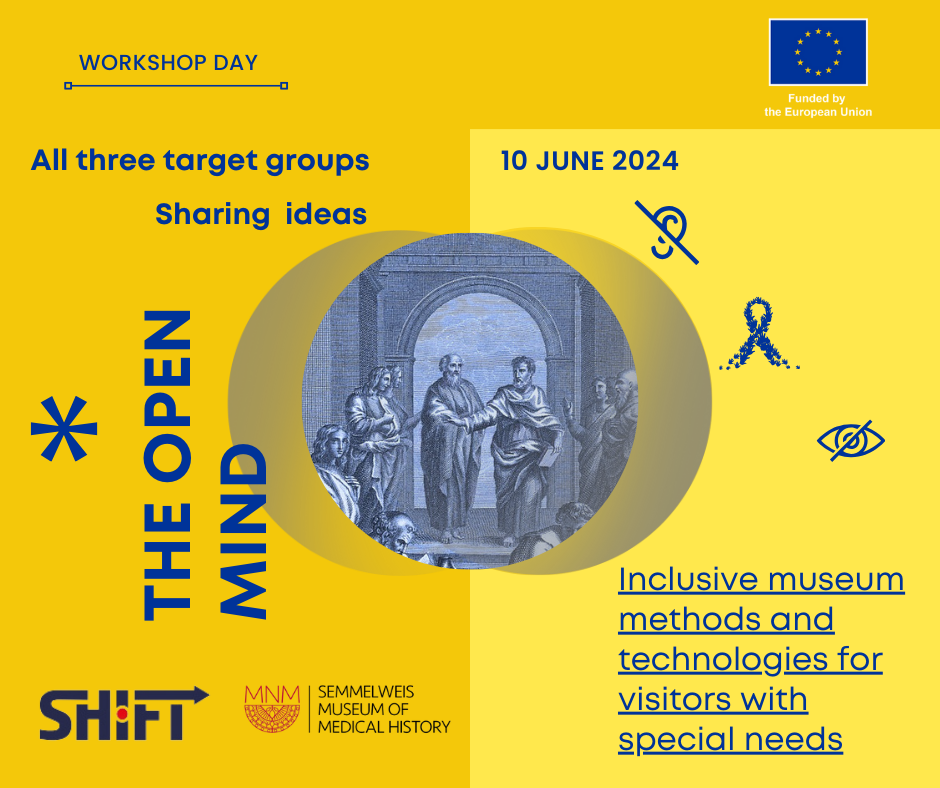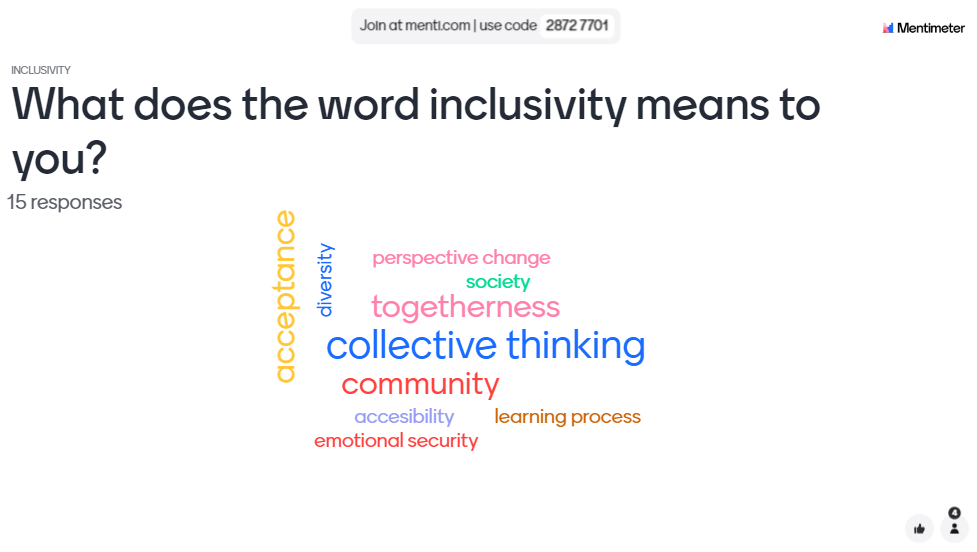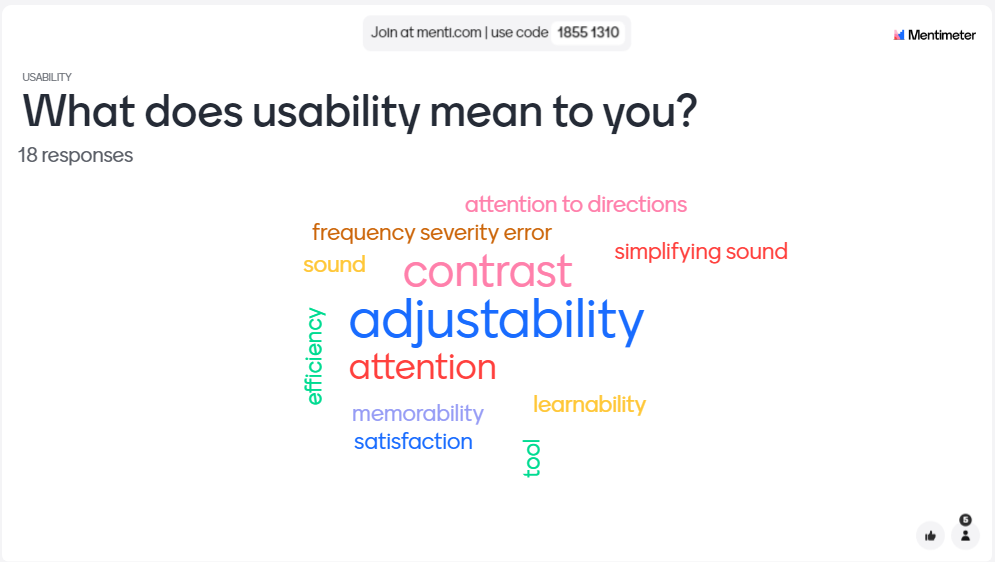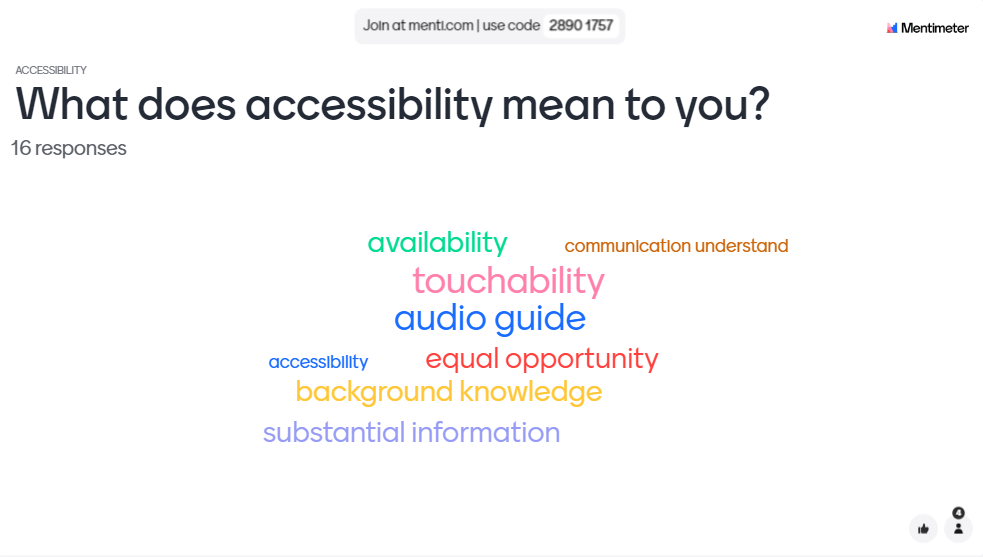The Semmelweis Museum of the History of Medicine (MNM SOM) organized a series of stakeholder workshops in April 2024 that focused on enhancing museum experiences for various visitor groups assessing the project’s new technological tools currently under development. (See details here.) Having shared the results with the consortium at the Athens project meeting some weeks later, a follow-up workshop was organised in June back at the Semmelweis Museum. Instead of hosting three separate workshops, individuals with visual and hearing impairments and those on the autism spectrum were invited to share their ideas and exchange experiences regarding their challenges and best practices when visiting museums and cultural institutions.

The workshop started with a welcome by Benedek Varga, director of the museum, followed by a short update on the latest developments in the project. Based on these, visually impaired participants and professionals working in the field of autism were asked to provide feedbacks.
Thought bubbles / Word Clouds
Thought bubbles / word clouds were created based on the main objectives of the project: accessibility, inclusivity, and usability.

The keyword “inclusion” was associated by the participants with acceptance, openness, and the shaping of perceptions: emphasizing that inclusion should not only refer to the presence of visitors with special needs but also to the museum’s positioning in their perspective. What this means more precisely, as one participant put it, is that “Inclusion also signifies our ability to comprehend and appreciate what museums aim to provide, enabling us to be both inclusive and included on an equal footing, rather than perpetually being regarded as the minority to be incorporated.” This also means that museums must be aware of the abilities of its visitors, whether they are blind, adults, children, elderly, or from an urban or a rural background.

Regarding “usability”, the issues of barrier-free movement in museum spaces and the accessibility of artefacts were raised. The control of lighting is particularly important, as some visually impaired people need more light, while others are hindered by it. A special mention of glass display cases was made: they can pose a risk precisely because they are transparent. In such instances, contrast and predictability can help. It is also to the benefit of visitors to gather information in advance about the existence, size, and shape of the display case. Subdued but clear audible signals can also help.

In terms of “accessibility”, it was stressed that when planning a museum visit, an online accessible sound map improves the user experience. If visitors are not confronted only on the spot for the first time with the length of the exhibition, the route to be followed, and the type of installation, they are much more attentive to the reception of the exhibition, they understand the curatorial concept much more easily and they also encounter the value of the artworks more in-depth. A negative example is the over use of buttons: although push buttons are more practical than touch screens for a visually impaired person, they can only really fulfill their function if they know in advance that there is a button; where the button is; and what it does.
Landscape to soundscape
Participants were also given the opportunity to provide feedbacks on the „landscape to soundscape” technology, based on developments by consortium technology partners. Participants tested out different AI generated sample texts based on an artefact (“Die Toteninsel” by Arnold Böcklin (1827-1901). Feedback from people with visual impairments suggested: not to include references to the metric system, but rather use comparisons with similar objects; to describe the position of the elements of a painting; to provide directions; to describe colours, too; and to describe the placement of small objects on an image.
Museum exhibitions and how to upgrade them
Finally, participants visited the SOM’s exhibition to discuss their current state of display and to brainstorm on their future presentation with the help of SHIFT tools in order to improve accessibility to the exhibition. Participants were asked a series of questions on their depiction of the examined artefacts: a porcelain “opium pillow” and a wooden model of a medieval anatomical theatre. Both objects are exhibited behind display cases. For the visually impaired target audience, it was nearly impossible to understand the objects, as they were behind glass display cases, with really tiny descriptions on their sides. For them, the consensus was that a three-dimensional model would help to get a better understanding. For the autistic target audience, the primary opinion was the importance of receiving prior information about the objects and the exhibition itself. For an autistic person, it is imperative to be able to prepare for a situation and to know in advance what impulses are reaching them.
The workshop result clearly proved again that the involvement of these focus groups throughout the project’s various stages is crucial for developers, as their feedback significantly enhances the usability of the developed tools.
